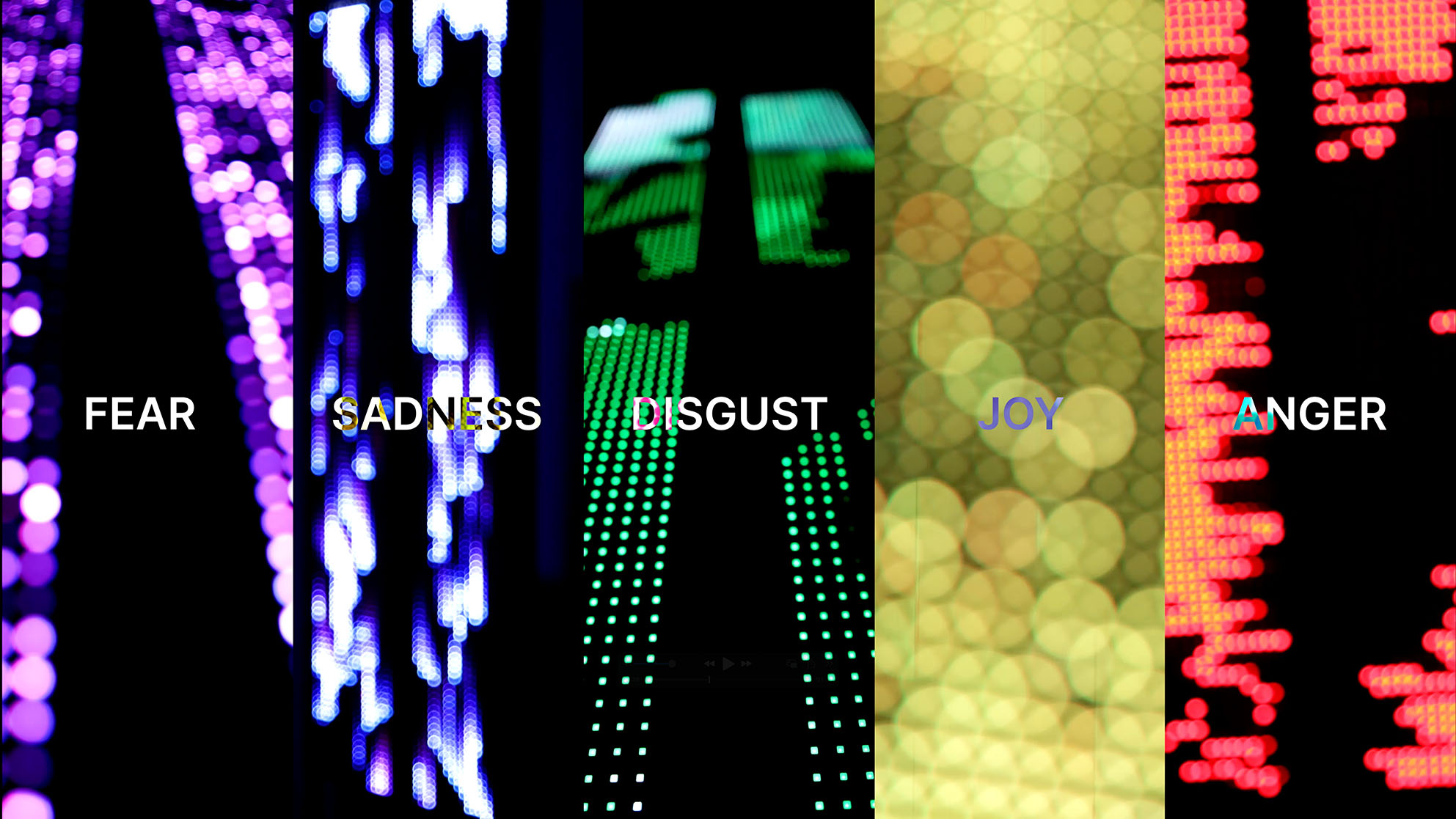An emotional landscape of sound and light reveals the hidden power of political language.
An artwork by KLING KLANG KLONG in collaboration with SCHNELLE BUNTE BILDER // CAMERA Frank Sauer // YEAR 2025
Throughout history, spoken words have moved our emotions. Despite today's technological advances, they remain just as powerful-now amplified by the mass media. Words do more than share information; they shape how we see the world, reinforce beliefs, and influence our emotions.
Nowhere is this more evident than in political speeches. These are not just statements of policy but carefully crafted narratives designed to resonate on a deep emotional level. A political speech is an attempt to construct a shared worldview, to define what is true, what is urgent, and what must be done. It is language at its most persuasive, applied at the highest level of influence.

BEHIND THE WORDS translates the emotional layer of political rhetoric — from across the spectrum — into an immersive audiovisual experience, allowing visitors to explore the power of language beyond the words themselves.
Focusing on the last five years of presidential campaign speeches in the Western Hemisphere, the installation presents the political spectrum in three distinct rooms — left, center, and right. Each room immerses visitors in the emotional landscapes that define these social spheres, revealing the persuasive power of language.
To do so, the installation draws on an Al-driven analysis of sentiment and five key emotions-joy, anger, sadness, disgust, and fear -alongside indicators such as hate speech, race-related stress, truth benchmarks, and automated fact-checking.
The data output is then translated into a musical and visual score, allowing visitors to both hear and see how the speech unfolds paragraph by paragraph. Rather than passing judgment, the installation invites reflection-showing how easily emotions can overshadow facts and prompting us to question when persuasion crosses the line into manipulation.
Through shifting light and sound, visitors physically experience the emotional contours of each speech. This sensory immersion highlights the unseen forces that influence our political realities. Only by recognizing the role of emotions in shaping our views can we begin to look beyond them.
TOP GRAPHS
Captures emotional intensities over time, showing how joy or fear can fluctuate within a single speech.
BOTTOM GRAPHS
Tracks hate speech potential, race-related stress, and fact checking accuracy.
HATE SPEECH
Language targeting or demeaning a person or group based on attributes such as race, religion, or gender, highlighting potentially threatening or hostile phrases.
RACE-RELEATED STRESS
Gauges explicit or implicit references to racial tension or bias, without automatically assigning blame.
FACT-CHECKING SCORE
A rough measure of how plausible or supported statements appear, rather than definitive proof of their correctness.
To give you a simplified overview, here’s how the AI conducted the analysis.
THE POLITICAL SPECTRUM
The classification of German politicians within the political spectrum was based on voter self-assessment, drawing on a survey conducted by the German Political Science Association.
SELECTION OF THE SPEECHES
For each segment of the political spectrum, we selected two German politicians as well as one European and one U.S. politician. We provided the AI with transcripts from one of the first speeches each politician gave at the beginning of their latest campaign rally.
LEVEL OF ANALYSIS
The AI examined each speech on two main levels:
Document-Level Analysis: The speech as a whole was analyzed to determine the overall emotional tone, sentiment, and key themes.
Paragraph-Level Analysis: Each individual paragraph within the speech was analyzed separately, providing detailed insights into how sentiments and emotions evolved throughout the speech.
AI-DRIVEN EMOTIONAL & SENTIMENT ANALYSIS
The AI detected the emotions joy, sadness, fear, anger, and disgust. This allowed the detection of both obvious and subtle emotions, categorizing the overall sentiment as positive, negative, or neutral.
IDENTIFYING STRONG LANGUAGE
The AI pinpointed words and phrases strongly expressing negative or positive emotions—such as language conveying love or hate—and specifically flagged potentially hateful, racially charged, or emotionally extreme (positive and negative) expressions.
KEYWORDS AND CONTEXT
To highlight central themes, the AI identified the most contextually important keywords and tracked their exact positions within each speech. This highlights how often and in which contexts important topics were addressed.
CHECKING FACTS & TRUTHFULNESS
The AI also evaluated each speech for truthfulness, providing an indication of how accurate or potentially misleading the statements might be.